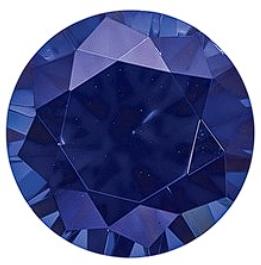Caring for Gems: Sapphire
 In our final installment of our five-part series on caring for gemstones, we will explore the care and cleaning of sapphire, the September birthstone. Check out our birthstone of the month post from September 6 for more information on the stone itself.
In our final installment of our five-part series on caring for gemstones, we will explore the care and cleaning of sapphire, the September birthstone. Check out our birthstone of the month post from September 6 for more information on the stone itself.
Just like rubies, sapphires are the second hardest stone aside from diamonds (sapphires and rubies are both corundum). And just like rubies, sapphires may be treated with heat to increase strength or subjected to lattice diffusion treatment which uses heat and chemicals to artificially change its color.
Knowing if your gem has been treated and how will help inform the care you provide. It is always important to keep your sapphires clean and well cared for. Some tips:
- Wash your gems with warm soapy water. Use a soft brush, like a toothbrush to get to hard to reach areas.
- Ultrasonic and steam cleaners are usually safe for untreated, heat treated and lattice diffusion treated stones.
- If your stone was glass filled (which is rarer in sapphires than rubies), only clean it with a damp cloth.
- Acidic substances, for example, lemon juice or boric acid, can damage sapphires. Remove them before cooking or cleaning.
- Many gems, including sapphires, will get a film on them from the oils on your skin, lotions and perfumes. Put your sapphires on after you are done getting ready to go out to avoid them looking dirty.
- Sapphires are very hard and will damage other stones if not kept separate. Store yours in a fabric-lined box to keep them safe.
- Regularly visit your jeweler to have your setting checked and diamond professionally cleaned. This helps to prevent the loss of gems in the case where your setting is damaged or the prongs holding your ruby are loose or broken.
Your jeweler will be your partner in making sure your sapphires stay beautiful. Visit Bridgewaters to have yours cleaned and the setting checked.
